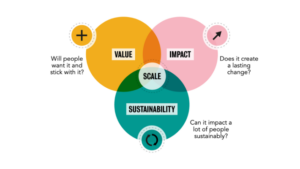Project Planning
Create a customisable plan for effective scaling implementation

Show the benefits and advantages your scale model offers the stakeholders you aim to engage at scale
Scaling a solution can only occur if those who you envisage delivering, funding, or engaging with that solution are excited by it and want to be involved.

The value proposition describes the specific benefits and advantages your scale model offers the stakeholders you aim to engage at scale. This tool will help you to assess how appealing your offering is to the partners and stakeholders who need to be bought in to deliver your scaling model successfully, particularly considering:
To work on the tool worksheet, follow these steps:
© Spring Impact. [2025]. Any use of this material must be attributed to Spring Impact.